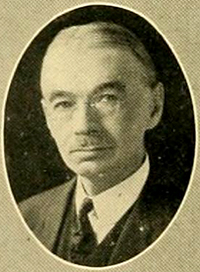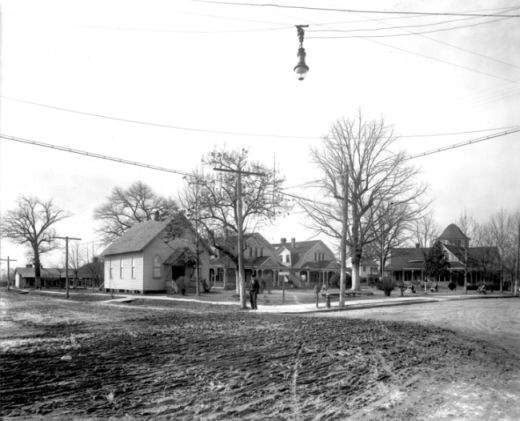Pensions, Prostheses, and Support
Support for disabled veterans after the Civil War varied. Union veterans had stronger support systems. They were funded and supplied through the federal government as early as 1862. The Confederate Congress employed paid relief systems by 1863. Confederate veterans received less support than Union veterans. The defeat of the Confederacy destroyed the Confederate government. Because of this, no support systems for Confederate veterans were created on a national scale. Programs to support Confederate veterans were state funded. The emancipation of enslaved workers and the Civil War damaged the South’s slave-based economy. This meant that there were few jobs and most state economies were depressed. Disabled Confederate veterans required even more financial support. They could only work limited jobs due to their disabilities. They also could not perform jobs that they had before, like farming.
North Carolina was an early supporter of Confederate veterans. It was the first state to provide artificial limbs to Confederate amputees. Artificial limbs were formerly sold by private companies and required money to buy. A series of January 1866 programs allowed disabled veterans to receive an artificial leg at no cost. North Carolina included arms at no cost by the next year. The producer of the artificial limbs was the Jewett’s Patent Leg Company. The factory was located in downtown Raleigh. Confederate veterans were invited to Raleigh to stay while they were fitted for their limbs. The factory produced artificial limbs until 1867.
Pensions were another form of public support for disabled veterans. Pensions for Union veterans came first and started in 1862. The payments were small. They could not support someone as a primary source of income. The 1879 Arrears Act, the 1890 Dependent Pension Act, and the 1907 age disability act helped expand the Union pension system. Confederate veterans received support from state-based programs. The North Carolina legislature passed a law granting $60 per year to Civil War veterans in 1879. This payment was for veterans who had lost both arms, both legs, or were totally blind. Twelve individuals applied for this pension. The program was expanded in 1885 to include more veterans as well as widows of veterans. Confederate widows received additional support in an 1887 act, and again in a 1909 act. Old age of Confederate veterans was recognized for pension payments by a 1901 act. Pensions and programs to supply artificial limbs to Confederate veterans were popular. Some people disagreed. William Henry Glasson, a notable academic of the time, framed pensions as “expensive” and “most costly."
Pensions were paid for many years. Surprisingly, the last person to receive a Civil War pension payment actually died in June 2020 in Wilkesboro, North Carolina. Irene Triplett was the last person to receive these payments. Her father, Moses Triplett, was both a Confederate and Union veteran. He switched from the Confederacy to the Union before the Battle of Gettysburg. He did so to qualify for a Union pension after the war. Irene was born in 1930. Moses was 83 and her mother Elida was 34 at the time of her birth. Younger women often married older Civil War veterans with pensions during the Great Depression. Pensions offered financial security to families during a hard time. Irene inherited her father’s pension payments until she died.
Soldiers' homes were another form of public support. Disabled veterans of the Civil War were offered shelter at these institutions. The soldiers’ homes grew to become facilities with games, churches, and more support systems over time. Disabled Union veterans benefitted from the National Home for Disabled Volunteer Soldiers system. This system was a federal program that sponsored soldiers’ homes in various states in the United States. Similar to pensions, Confederate veterans did not have a national system to use. Soldiers’ homes in Confederate states were state-sponsored. Virginia and Tennessee had facilities for both Union and Confederate soldiers’ homes. The Confederate Soldiers' Home in Raleigh was North Carolina’s site of support. Plans to found a home for Confederate veterans in North Carolina began in 1881. The Confederate Veterans Association of North Carolina formed and helped support the plans. They leased an eight-room house beginning in 1890. Its purpose was to serve as a “home or homes for indigent, infirm and invalid Confederate soldiers and sailors, or their widows and orphans.” The house is located on Polk and Bloodworth Streets in downtown Raleigh. In 1891, a permanent home was granted by the state government. They converted the former Confederate Pettigrew Hospital into a soldier’s home. It was called Camp Russell and was managed by the Soldiers' Home Association. It was the fifth home for Confederate veterans in the nation, and 1456 men lived there until it closed in the 1930s. A third of these veterans were wounded or had disabilities from the Civil War. Camp Russell closed in August 1938 after the last Confederate veteran living there left to live with his family.
Guided Reading Questions:
- What was the name of the company that produced artificial limbs for disabled veterans?
- What were pensions?
- What was Camp Russell and when did it close?
References:
Bonnan-White, Jess, Jewelry Yep, & Melanie D. Hetzel-Riggin. “Voices from the past: Mental and physical outcomes described by American Civil War amputees.” Journal of Trauma & Dissociation: the Official Journal of the International Society for the Study of Dissociation (ISSD), 17(1), 13–34. 2016. https://doi.org/10.1080/15299732.2015.1041070
Edwards Laura C. Dead or Disabled: The North Carolina Confederate Pensions 1885 Series. Wake Forest N.C: Scuppernong Press. 2010.
Gettysburg National Military Park. “National Disability Employment Awareness Month: A Civil War Connection.” The Blog of Gettysburg National Military Park. October 31, 2014. https://npsgnmp.wordpress.com/2014/10/31/national-disability-employment-...
Gillam, F. Victor, 1858?-1920, Artist. Throwing light on the subject Uncle Sam to old soldier -- "I'm not after you; I'm after the rascals behind you" / / Victor Gillam. 1898. New York: Sacket & Willems Litho. & Pt'g. Co. Photograph. https://www.loc.gov/item/2015645585/.
Gorman, Kathleen L. “Civil War Pensions: History of the Union federal and Confederate state pensions systems.” Essential Civil War Curriculum. Blacksburg, VA: Virginia Center for Civil War Studies.
Grant, Susan-Mary. “The Lost Boys: Citizen-Soldiers, Disabled Veterans, and Confederate Nationalism in the Age of People’s War.” Journal of the Civil War Era 2, no. 2 (2012): 233–59. https://www.jstor.org/stable/26070224.
“Legs for Soldiers.” The Tri-Weekly Standard (Raleigh, N.C.), Jan. 19, 1866. Edition 1. Page 2. https://newspapers.digitalnc.org/lccn/sn85042143/1866-01-19/ed-1/seq-2/
“Lenoir Family Papers, 1763-1940, 1969-1975.” Southern Historical Collection. Chapel Hill, NC: University of North Carolina at Chapel Hill. https://finding-aids.lib.unc.edu/00426/
Logue, Larry M and Peter David Blanck. Race Ethnicity and Disability : Veterans and Benefits in Post-Civil War America. 2010. New York: Cambridge University Press.
Marten, James Alan. Sing Not War : The Lives of Union & Confederate Veterans in Gilded Age America. 2011. Chapel Hill, NC: University of North Carolina Press. https://library.biblioboard.com/content/55a04edd-0a99-48ef-94e8-b1e89166....
Newman, William. “Result of Appointing a Veteran as Postmaster.” Frank Leslie's Illustrated Newspaper. February 11, 1865. Still image, text. Gettysburg, PA: Special Collections and College Archives, Musselman Library, Gettysburg College. https://library.artstor.org/asset/SS7731291_7731291_10903867.
Nielsen, Kim E. A Disability History of the United States. 2012. Boston: Beacon Press.
“Peculiar Accidents.” The Farmer and the Mechanic, part of The State Chronicle (Raleigh, N.C.), June 16, 1881. https://newspapers.digitalnc.org/lccn/sn85042098/1881-06-16/ed-1/seq-3/
“Post Traumatic Stress Disorder and the American Civil War.” National Museum of Civil War Medicine. May 2, 2019. https://www.civilwarmed.org/ptsd/
Reilly, Robert F. “Medical and surgical care during the American Civil War, 1861-1865.” Proceedings (Baylor University. Medical Center). Vol. 29 (2). 2016. https://www.ncbi.nlm.nih.gov/pmc/articles/PMC4790547/
Sauers, Cameron. “To Remake a Man: Disability and the Civil War.” The Gettysburg Compiler. April 9, 2019. https://gettysburgcompiler.org/2019/04/09/to-remake-a-man-disability-and...
Somerville, Diane Miller. Aberration of Mind: Suicide and Suffering in the Civil War–Era South. University of North Carolina Press, 2018. https://www.jstor.org/stable/10.5149/9781469643588_sommerville.
Wegner, Ansley Herring. Phantom Pain : North Carolina's Artificial-Limbs Program for Confederate Veterans : Including an Index to Records in the North Carolina State Archives Related to Artificial Limbs for Confederate Veterans. 2004. Raleigh N.C: Office of Archives and History, N.C. Dept. of Cultural Resources.
“Who Fought?” American Battlefield Trust. https://www.battlefields.org/learn/articles/who-fought


